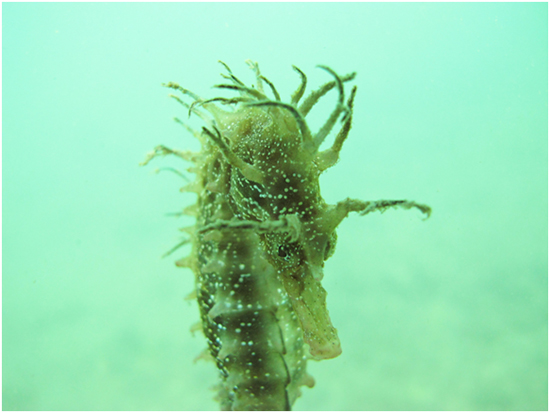 Seahorses are to be left alone or we risk seeing them disappear from the Ria Formosa, warned a group of researchers from the Center for Marine Sciences (CCMAR) in the Algarve who have been studying this species for over ten years.
Seahorses are to be left alone or we risk seeing them disappear from the Ria Formosa, warned a group of researchers from the Center for Marine Sciences (CCMAR) in the Algarve who have been studying this species for over ten years.
Scientists from the Fisheries Biology and Hydroecology Group (GBPH) warn that it is necessary to protect the habitats of this fragile species and avoid by all means its improper handling, since "there has recently been a marked decrease in these populations", according to the center. research associated with the University of Algarve.
One of the main concerns of the specialists is «the frequency with which some companies engaged in maritime-tourism activities or even tourists passing through the Algarve, certainly out of ignorance, have found seahorses in the Ria and have handled the species».
This destabilizes the habitat of seahorses, “causing a possible and involuntary dispersion, which will certainly be a problem for the maintenance of healthy populations”.
This is one of the risk factors that have already been identified and that may be behind this disappearance of seahorses from the Ria Formosa, together with direct or accessory fishing and pollution. But there is still no certainty about what is causing the decrease in the population of this species
"Oh hippocampus hippocampus and the H. guttulatus sThese are species with a high susceptibility to disruptive factors, such as habitat changes and overexploitation, which, in turn, are enhanced by the particularities of the biology and ecology of the species in this group, namely, low mobility, reduced capacity dispersion, low fertility, specialized and relatively long-term parental care and fidelity to the partner”, according to the GBPH researchers.
"As such, and in the case of protected species, covered by the Habitats Directive 92/43/EEC, of 1992, any activity that involves their handling, detention or capture requires authorization by the competent authorities", added CCMAR .
“The group has developed actions to raise awareness and environmental education among populations in order to draw attention to this type of irresponsible activities, which threaten the species of seahorses in the Ria Formosa”, according to the research centre.
On the other hand, «scientists have developed non-invasive tools for studies of abundance (photo-identification) and projects to promote the increase in complexity of habitats, through the creation of artificial structures».
"To assist in the conservation aspect, the group was also able to close the complete cycle of reproduction of this species in aquaculture, making it possible today to cultivate seahorses for aquarium purposes or for possible repopulation in the wild", concluded the associated center to UAlg.
The researchers are also preparing to propose the inclusion of the two species of seahorses in the Berne Convention (or Convention on Wildlife and Natural Habitats in Europe) which will shortly be revised by the Institute for the Conservation of Nature and Forests (ICNF ).


















Comments